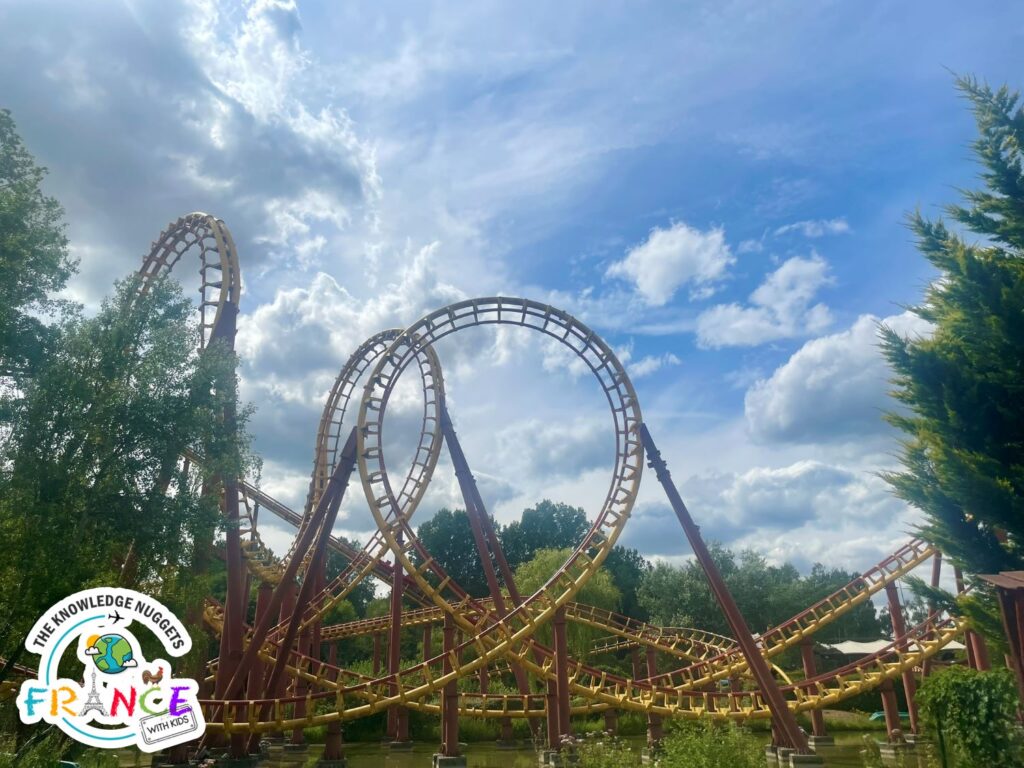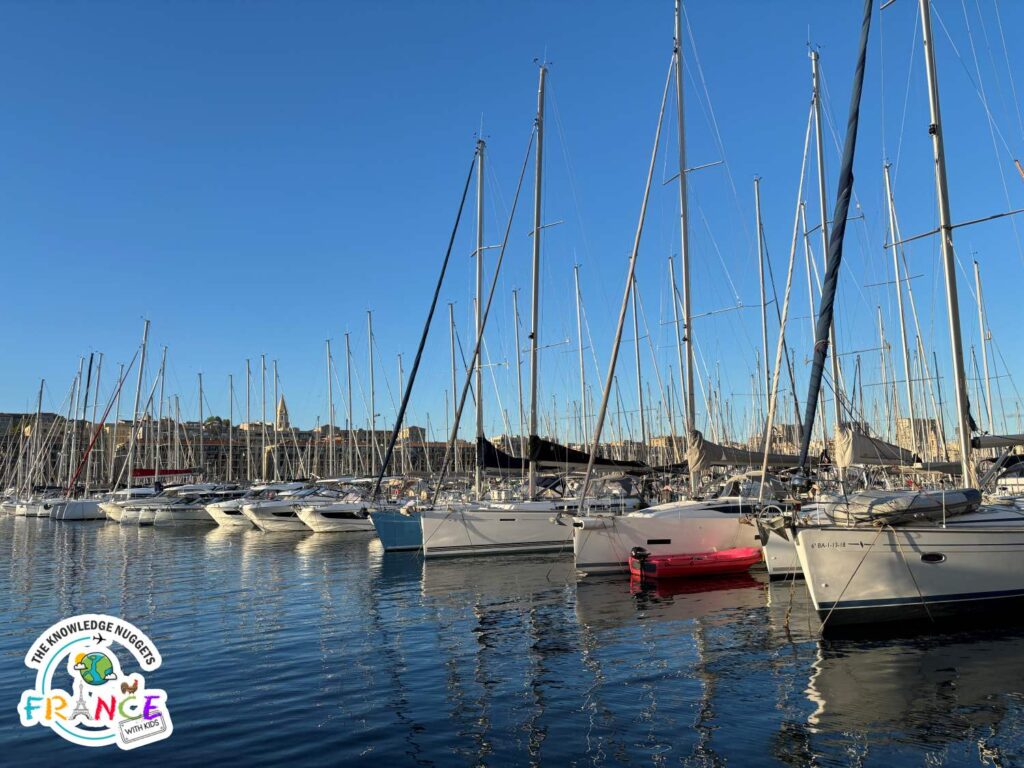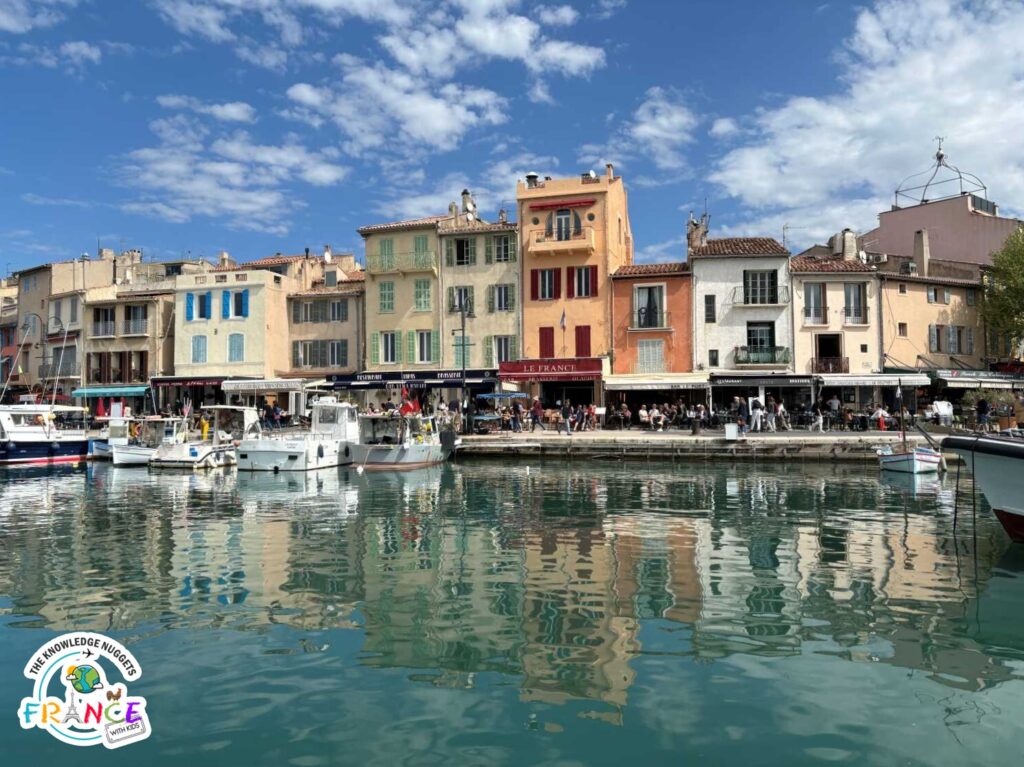Today I’ll be sharing our car-free excursion along the beautiful Alsace Wine Route with kids, a renowned French destination filled with lush vineyards, charming villages, and, as you might expect, plenty of delicious wine.
Now, if navigating this 170-kilometre route with children in tow sounds daunting, fear not! I discovered a fantastic solution – the Kutzig hop-on hop-off bus. It was comfortable, convenient and allowed our family to explore the region at our own pace and without the stress of driving from place to place.
Join me as I recount our summer day trips through the picturesque towns and villages of Colmar, Ribeauvillé, Hunawihr, Riquewihr, Kaysersberg vineyards, Turckheim, and Eguisheim.
Where is the Alsace Wine Route?
The Alsace Wine Route is located in northeastern France, in the Alsace region, near the border with Germany. It stretches approximately 170 kilometres (105 miles) between the towns of Marlenheim in the north and Thann in the south, passing through picturesque vineyards and historic villages along the way. The route is famous for its scenic landscapes, half-timbered houses, and the renowned Alsace wines produced in the region.
Alsace is one of France’s most prestigious and diverse wine-producing regions, home to over 1,000 wine producers. While most wines from Alsace are white, except for Pinot Noir, the region is particularly renowned for its Riesling, Gewürztraminer, and Pinot Gris varieties.
We used Colmar as our home base to explore the Alsace Wine Route with our kids. However, you can select any town or village along the route as your base.
How to travel along the Alsace Wine Route with kids, car free
After taking a train from Paris to Colmar, we opted not to rent a car during our five-day stay. Instead, we boarded the Kutzig hop-on, hop-off bus, a delightful, convenient, and comfortable way to experience the heart of the Alsace Wine Route with kids.
You can hop on and off the bus as often as you like. The bus visits each town along the route approximately every 90 minutes, allowing you to see several locations in a single day. My kids thoroughly enjoyed the experience of riding on the open-top bus and hopping off at different scenic stops. Depending on your children’s age, it’s realistic to cover 2 or 3 stops in a day before they start getting tired.
Before boarding the bus, reserve your tickets through the Kutzig website or mobile app. The mobile app is useful, providing practical information about bus timings and the places where you’ll be making stops. It even includes a list of must-do activities at each stop, previewing what awaits you at the next destination.
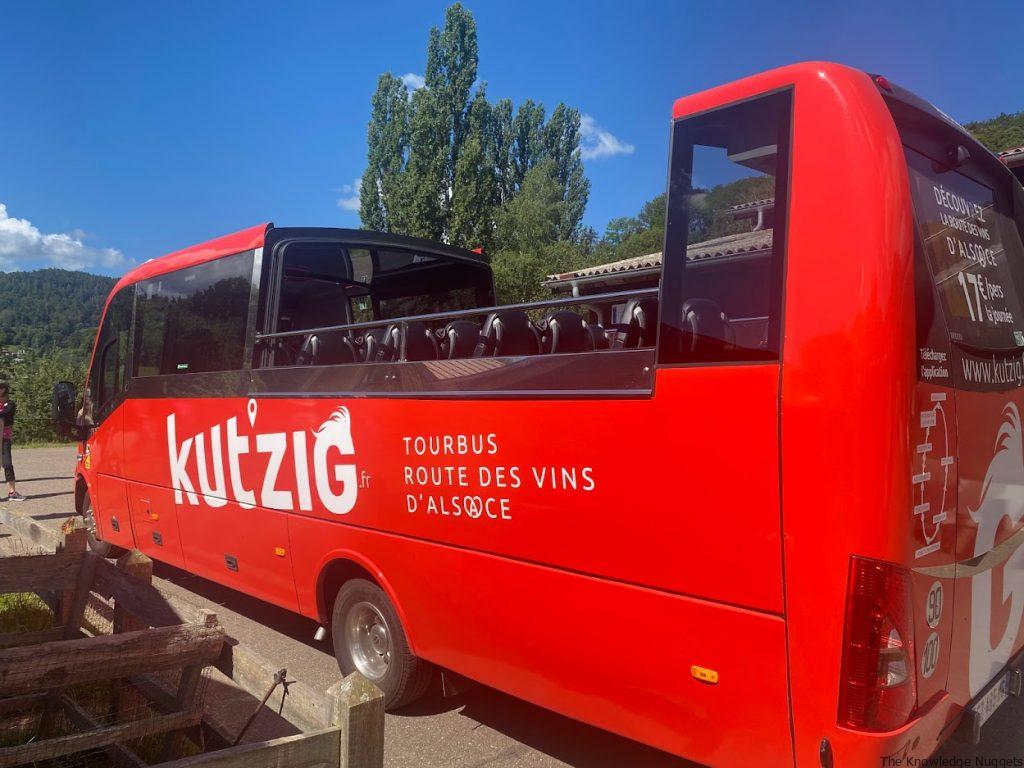
The Kutzig bus stops at the most picturesque locations along the Alsace Wine Route, including:
- Colmar
- Ribeauvillé
- Hunawihr
- Riquewihr
- Kaysersberg vineyards
- Turckheim
- Eguisheim
The bus is a double-decker with an open top that lets you enjoy the fresh air and sunshine, just as we did. In case of rain, the roof slides closed, ensuring your comfort throughout the journey.
Bus stops along the Alsace Wine Route
1. Colmar

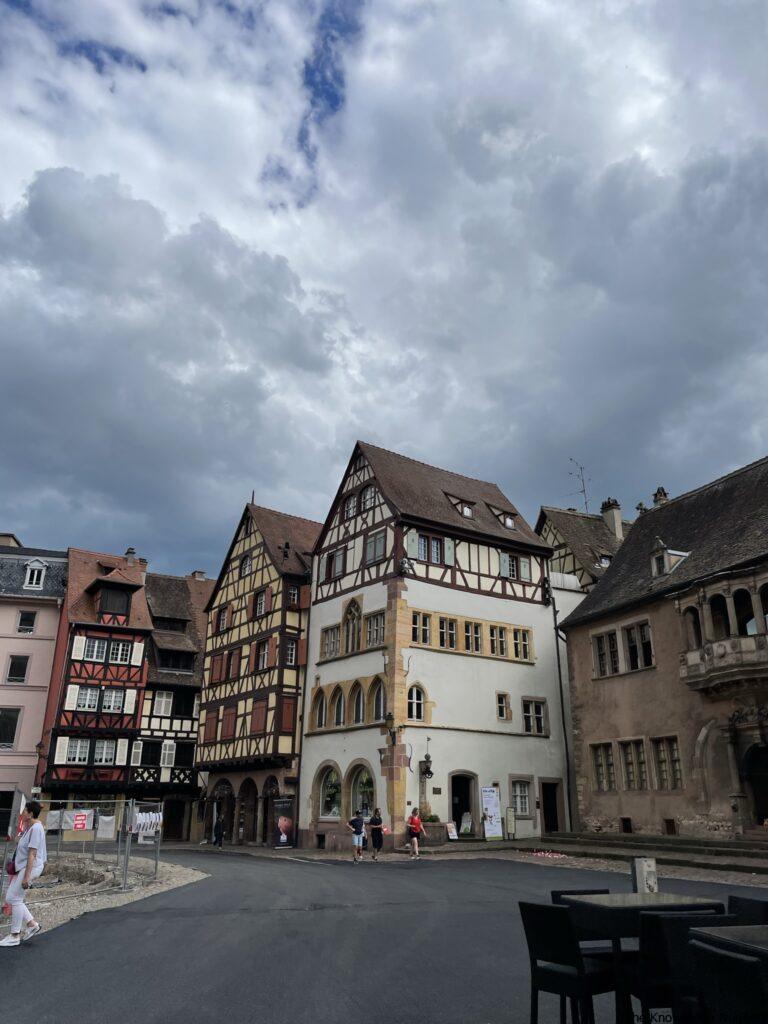
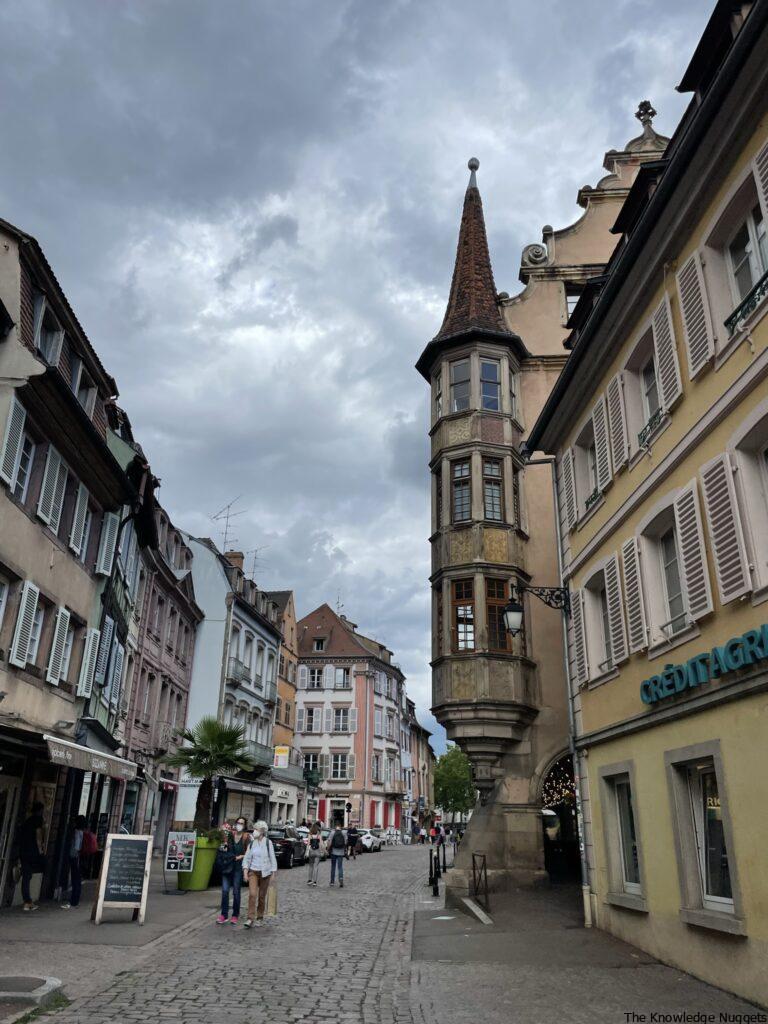
For me, Colmar effortlessly steals the spotlight as the cutest town in Alsace. With its small size and undeniable beauty, it feels like a scene from a fairy tale. Colmar is a perfect town to visit with kids, small enough to explore on foot and packed with beautiful scenery and attractions to visit. You will want to take a photo at every corner you turn.
If you plan on visiting Colmar with your kids, read my comprehensive guide to Summer Weekend in Colmar with Kids. However, for those short on time and only able to spend a day or less in this magical town, I suggest the following to make the most of your time.
1) Head to La Petite Venise, the most picturesque neighbourhood in Colmar. Walk along the colourful streets that line the canals. A leisurely boat ride with kids along the canals is also a fantastic way to explore Colmar. These guided tours in small boats depart at the foot of the Saint-Pierre Bridge and take about 25 minutes.
2) Lose yourself in Old Town and admire remarkable historical and architectural buildings, with some dating back as far back as the 14th century. Seek out the Adolph House, Maison des Têtes, Pfister House and Koïfhus building, each telling its own story through the ages.
3) If you have time to visit a museum with kids, I recommend the Toy Museum, Hansi Museum or Unterlinden Museum.
2. Ribeauvillé
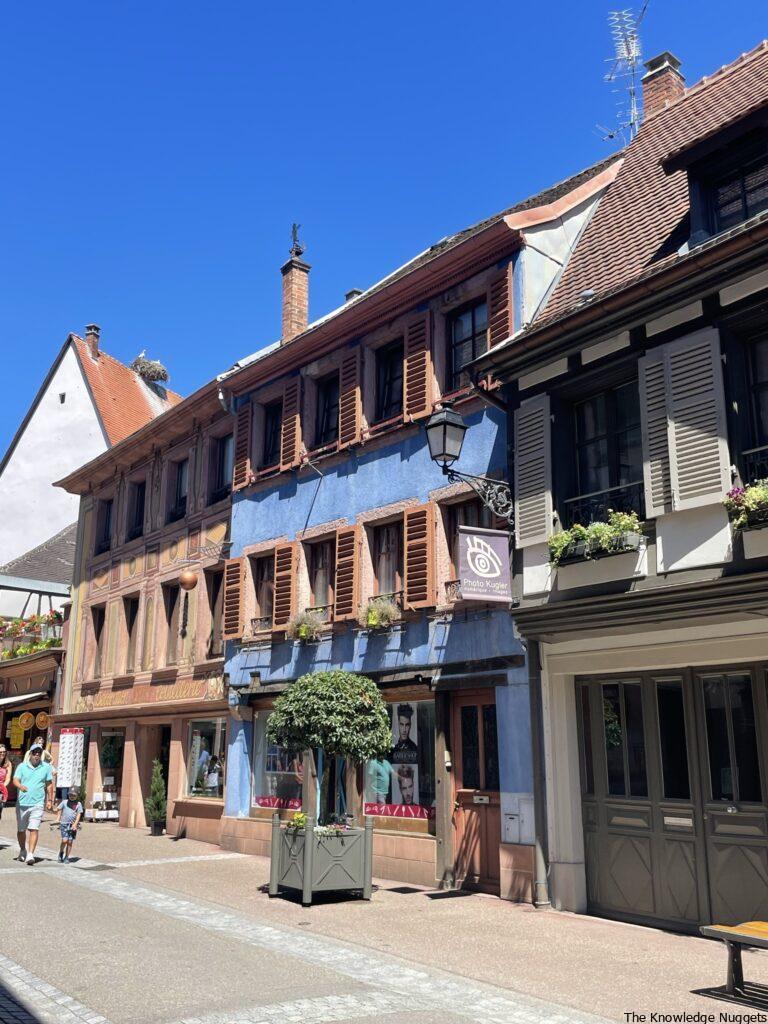
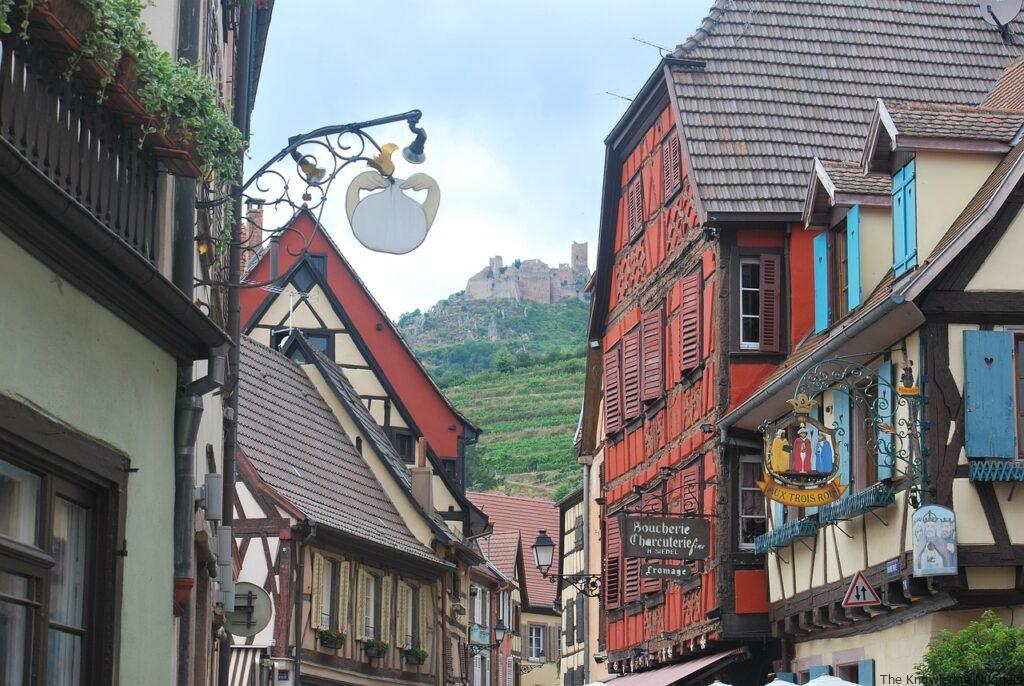
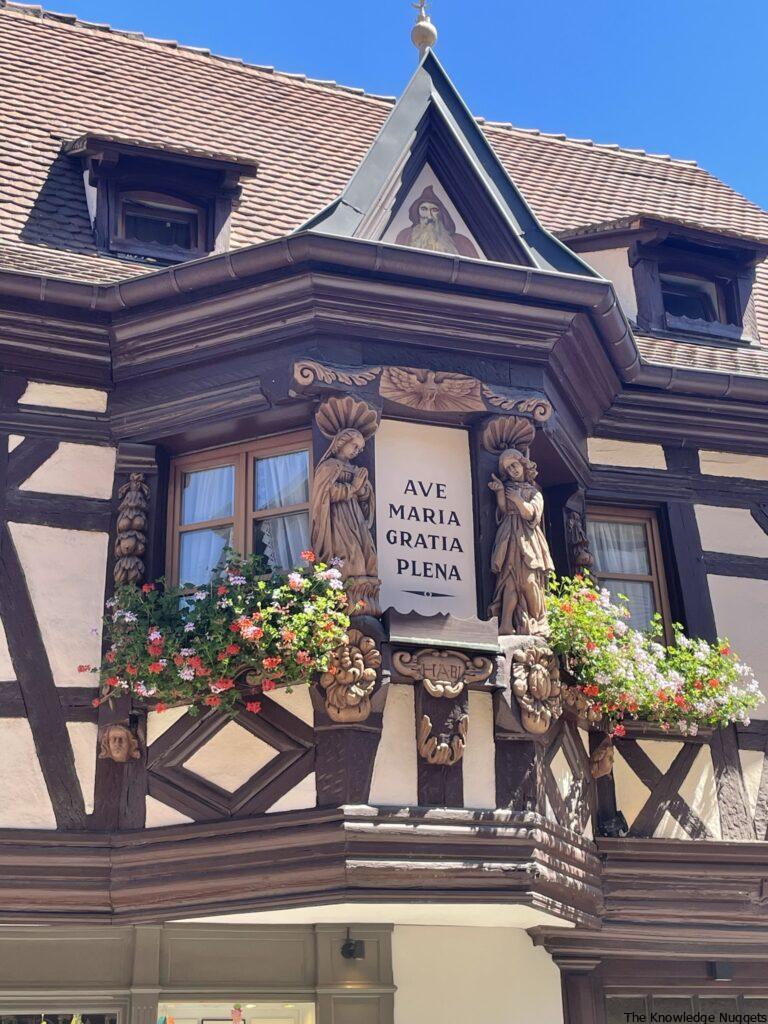
Ribeauville is full of narrow streets of medieval Alsace houses, which open into picturesque squares with fountains and statues, such as the beautiful little square Place de la Sinne. Perched above Ribeauville, you will find the impressive remains of three renowned castles: Saint-Ulrich, Girsberg, and Haut-Ribeaupierre. These castles were once owned by the lords of Ribeaupierre and hold great historical significance. As you approach the town, these majestic ruins dominate the landscape, capturing your attention from the very moment you arrive.
Pfifferhüss, also known as The Minstrel’s House, is one of the town’s finest half-timbered houses with beautiful loggia above the door, which dates back to 1663. The word “ménétrier” refers to a minstrel or a musician who performed during feasts and parties in the medieval period. Today, the town still hosts the annual Fête des Ménétriers, where visitors can travel back in time and enjoy music and entertainment from the Middle Ages.
3. Hunawihr
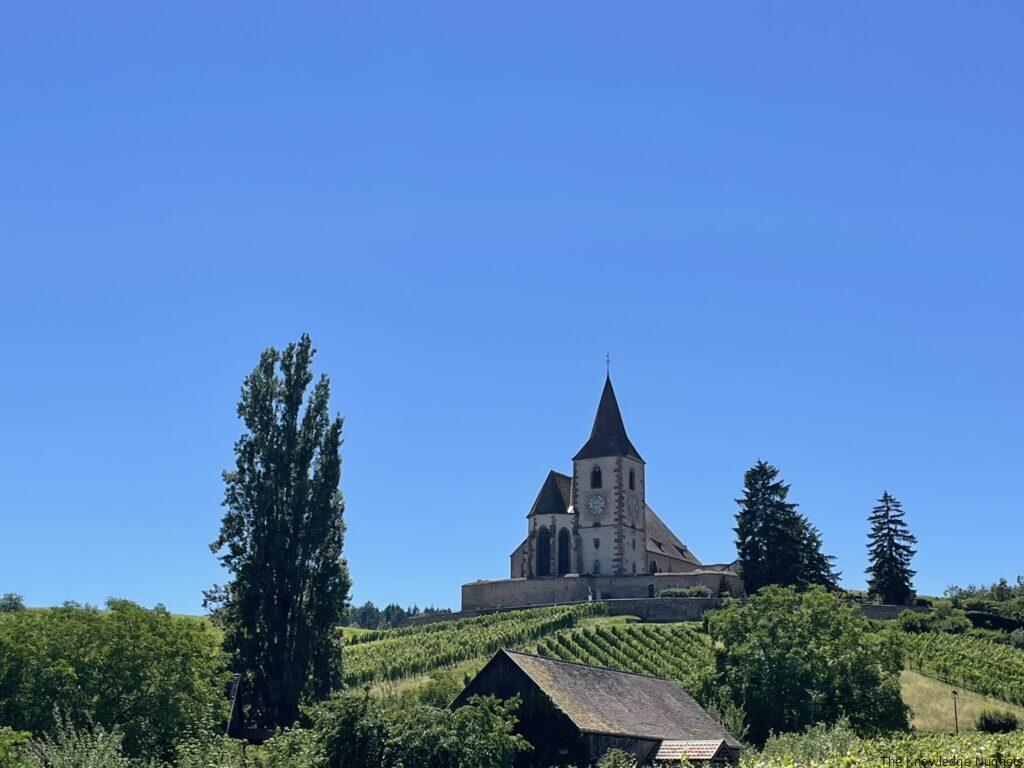
This quaint village is well known for its traditional wine-growers’ houses dating back to the 17th and 18th centuries, with many featuring small courtyards that open onto the streets. In such homes, the ground floor, constructed of stone, functioned as a storage area, whereas the upper floor, typically designed with timber framing, served as the living space.
Overlooking the village, you will see a beautiful church Saint-Jacques-le-Majeur, perched on a hillside amidst the vineyards.
Check out the Fountain of St Hune, which has an interesting story. The Fountain of St. Hune in Hunawihr is linked to a legend about Saint Hune, a 7th-century noblewoman turned nun. Renowned for her kindness and miraculous healings, she was believed to bless the village fountain, giving its water curative powers. A well was built in her honour, and to this day, the Fountain of St. Hune remains a revered site symbolising her healing abilities.
4. Riquewihr
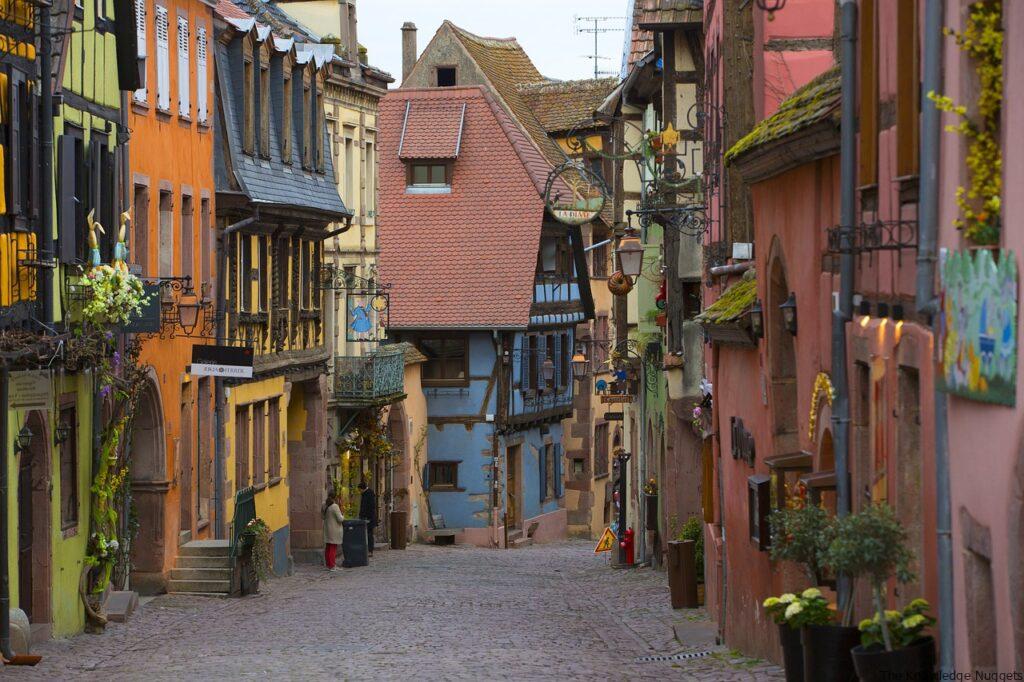
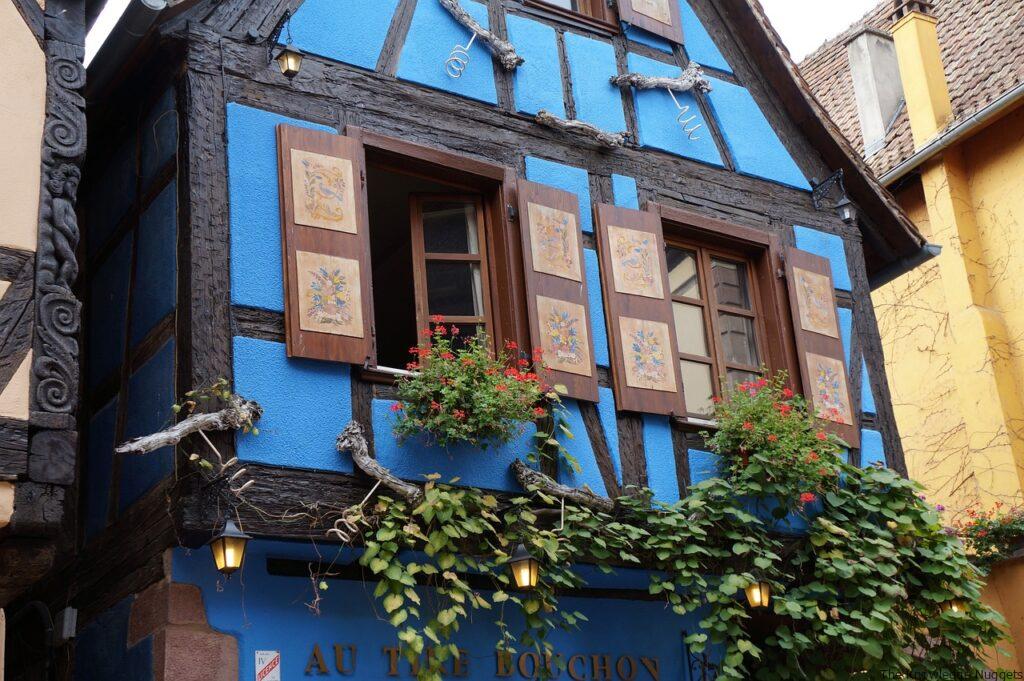
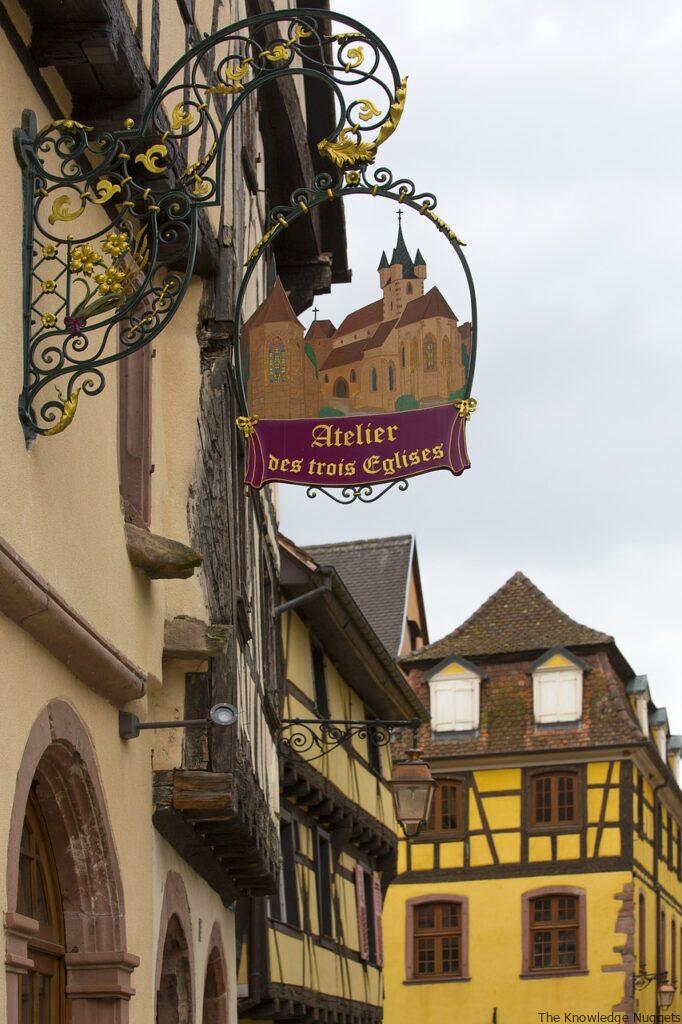
Riquewihr is a small village with more colourful Alsatian medieval houses to discover. Start your walk with the main street Rue Charles de Gaulle, admiring the beautiful half-timbered houses and then lose yourself in the many beautiful hidden little streets.
Throughout history, Riquewihr thrived, especially during the 16th century, due to the cultivation of grapes and the flourishing trade of its highly-regarded wine across Europe. This wealth allowed the town to construct a double fortification wall. The old village displays evidence of this affluence with its closely-packed urban layout, featuring houses built during the 15th to 18th centuries.
Some of the highlights include exploring the ramparts which surround the town, La Tour des Voleurs (“Thieves’ Tower”), which used to be a prison, and the Dolder Tower (former watch tower).
5. Kaysersberg Vineyards

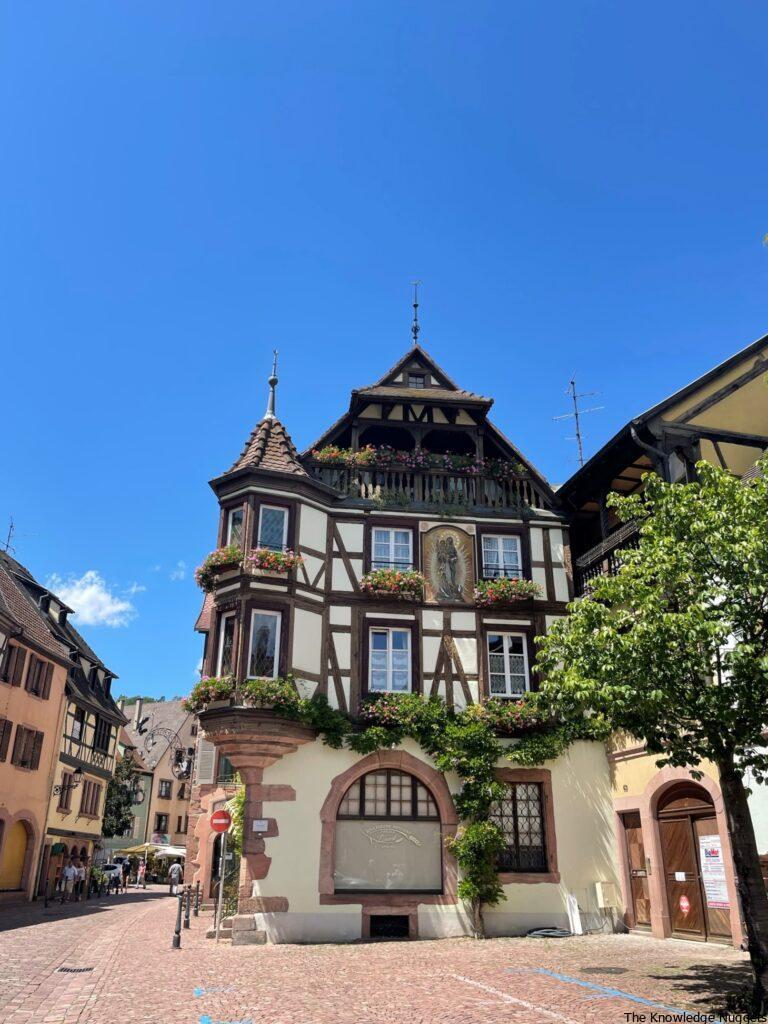

Kayserberg is another quaint small town to explore on foot with a unique 16th-century fortified bridge spanning the Weiss River and is built from the distinctive pink sandstone from the Vosges mountains.
The medieval Kaysersberg Castle provides stunning panoramic views of the town and surrounding vineyards. The ruins of this 13th-century fortress are only a short walk from the town centre, and the 122-step staircase leading up to the top is easy enough to do with small kids.
Kaysersberg is also the birthplace of Albert Schweitzer, the Nobel Peace Prize laureate and philosopher. His former residence now houses a museum showcasing exhibits on his life and accomplishments.
6. Turckheim
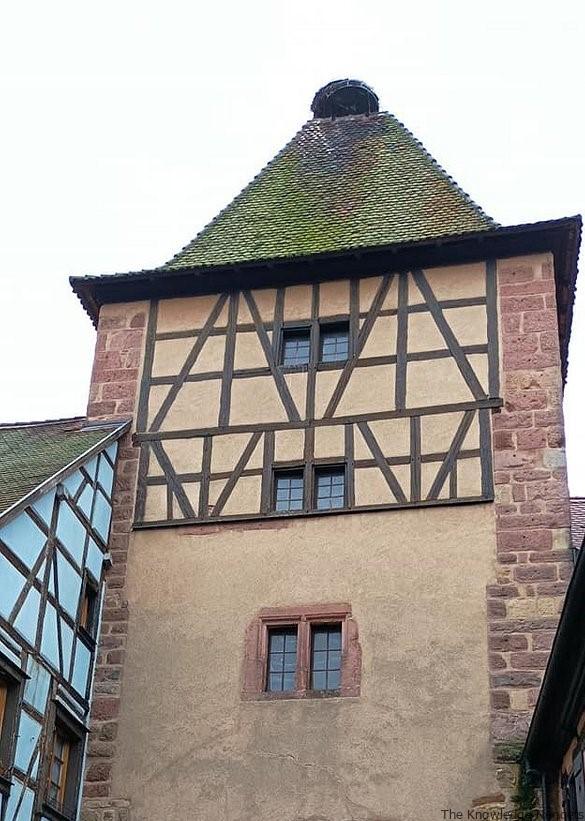
Enter this small village via one of three distinct historic gates – La Porte de France, La Porte de Munster, or La Porte du Brand. Stroll around the charming Place Turenne, appreciate the architecture of the Town Hall, and visit the St-Anne Church, which dates back to 1837. Wander along Grand Rue to admire the beautiful and vibrant Renaissance half-timbered houses.
7. Eguisheim
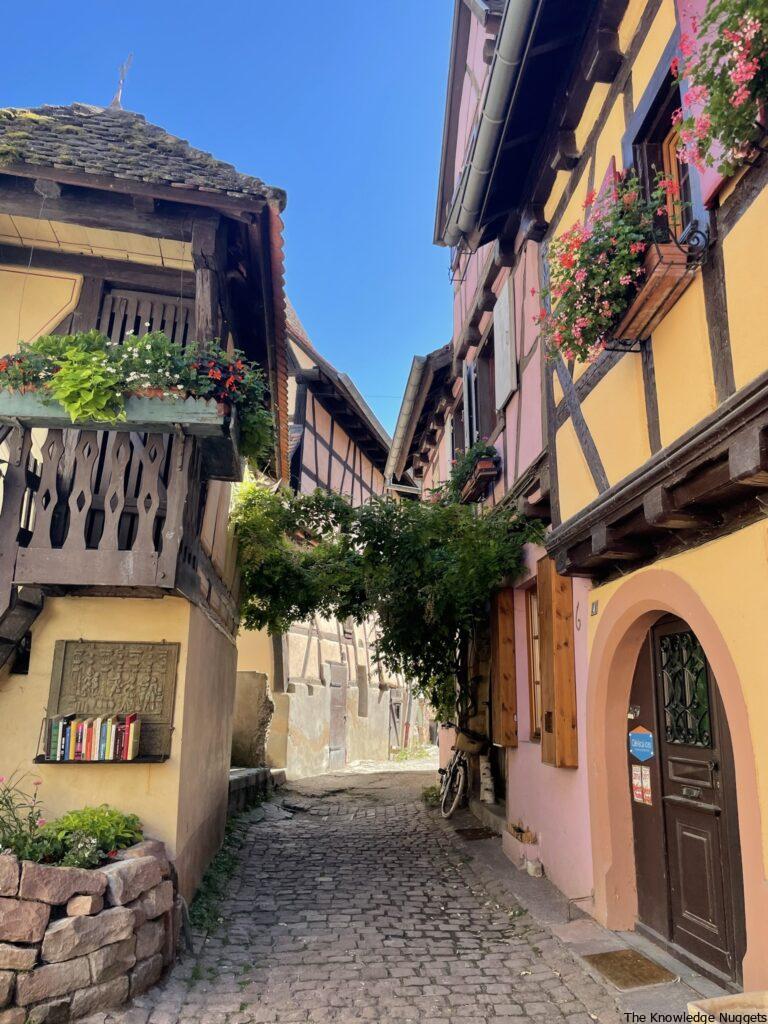


Eguisheim was my favourite destination on the Alsace Wine Route after Colmar. This charming little village was brimming with vibrant colours, abundant hanging flower arrangements, and an undeniable fairy tale atmosphere. We couldn’t help but stop and take photos next to each unique and picturesque house.
Though the village is small, its narrow cobbled streets offer plenty to see. So, take your time as you stroll through the lanes and marvel at the intricate details and ornamental decorations that adorn the houses. Be sure to visit the Rue du Rempart, both South and North, for a deeper dive into its allure. Finally, wind down and relax at Saint-Léon Square. This tranquil setting features a beautiful fountain with a statue of St. Leon, offering the perfect spot to rest.
Have you visited any of the villages along the Alsace Wine Route with kids? Share your comments on what you liked the best.
Fun Fact
During your visit to Alsace, you’ll notice that numerous restaurants and bars serve wine in distinctive wine glasses characterised by long stems and green bases. Although wine connoisseurs frown upon these glasses, as they believe they are too small to oxygenate the wine properly, I find them fun and appealing. Drinking wine from these uniquely styled glasses adds to the authentic Alsatian experience! Santé!

Disclosure: This post contains affiliate links and I receive a commission if you visit a link and buy something on my recommendation. Purchasing via an affiliate link doesn’t cost you any extra, and I only recommend products and services I trust. All opinions are my own. For more details see my disclaimer and privacy policy.

